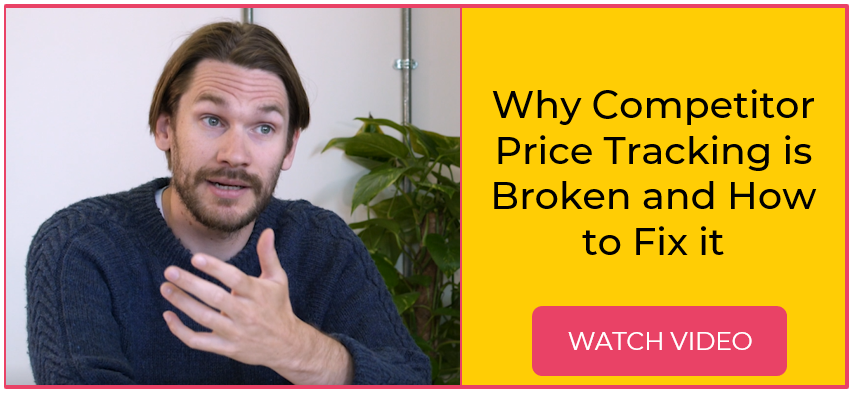At BlackCurve, we define competitor tracking as any strategy that involves monitoring competitor data and adjusting your own prices accordingly. This is often as simple as finding the lowest competing product and undercutting the price
Consumer electronics is a good example. If you are looking for a reasonably priced kettle you wouldn't particularly care about the brand and there is likely to be very little difference in functionality. This means that you will likely pick the product with the lowest price.
So, is this a good strategy? Tracking competitor data has a number of benefits. For vendors, it’s an essential process as it gives insight into the market they operate in. This insight can directly inform decisions.
It allows them to understand whether they can be competitive on a product, set a benchmark when bringing a product to market, and, also let them know which competitors are dominating the space.
For example, if we look at the bar chart below we can observe that the bulk of the price matches come from Homespace Direct - almost twice as much as Tesco, and Yorkshire Linen.
Unfortunately relying solely on competitor data is not necessarily a good pricing strategy. When carrying out Pricing Health Assessments at BlackCurve we often see clients encounter a number of pitfalls.
First and foremost, there is often only an overlap with your competitors on typically 20-30% of products that you both sell. This means that if your pricing strategy relies solely on competitor data, the remaining 70-80% of your inventory is not being optimised!
Secondly, price is also not the only reason for buying a product. Consumers are often willing to pay more for a brand they recognise. This means that basing prices on competitor data may not reflect the value that customers put on a product.
This can lead to a number of toxic pricing behaviours. For example, we often see that strategies based solely on competitor prices have a bias towards reducing prices as seen in the figure below.
This behaviour occurs if competing vendors set their pricing strategies relative to each other.
In the worse case, this leads to a race to the bottom as companies end up in a cycle where they continually reduce prices until they reach the minimum they are willing to sell it for. This in no way represents what a buyer is willing to pay.
So what’s the solution?
At BlackCurve we recommend customers use competitor data to inform rather than define their pricing strategy. It is now possible for businesses to leverage a wide range of datasets of which competitor data is just one part.
These include monitoring website traffic to understand demand or using macroeconomic data to understand the current business cycle. These datasets can be used to understand the key drivers for different slices of a customers' inventory and using this insight they can then select a pricing strategy accordingly.
Related Post
I Spy: How to Automate Ecommerce Competitor Price Tracking
Competitor Price Tracking: How to Spy on The Competition
The Benefits of Price Tracking Software

